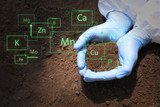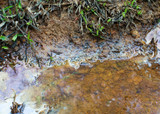Blog
Selecting Soil Sampling Tools for Contaminated Site Work
Selecting the right tools for contaminated site work lays the groundwork for valid data and successful remediation. Selecting soil sampling tools for contaminated site work is a critical component of every project, shaping data accuracy, defensibility, and the ability to meet both schedules and budgets.
Effective sampling starts by recognizing that a generic or familiar tool isn’t the answer. Site geology, contaminant profiles, and specific data quality objectives each play a major role in
…
December 10, 2025
10 Reasons Testing Groundwater Is Important
Groundwater is one of the most valuable resources we have. It provides drinking water for millions and supports everything from farms to factories. Because it stays hidden underground, we often forget to monitor its quality. We’ll highlight the 10 reasons testing groundwater is important, because understanding these reasons helps us take smart, practical steps that protect our water supplies and the people who rely on them. Regular testing keeps us safe, supports healthy communities, and h
…
November 20, 2025
Why You Should Regularly Check Termite Bait Stations
In industries such as agricultural or groundwater management, unseen threats can quietly undermine your work. Among the most persistent and destructive threats are termites. Their subterranean activity often goes unnoticed until the damage is already done. And that’s a major reason why you should regularly check termite bait stations. Whether you’re trying to protect crops, monitor soil, or safeguard infrastructure, routine inspections are quiet but powerful ways to defend the integr
…
November 12, 2025
How the Mining Industry Uses Sediment Sampling Data
In mining, the decisions made before the first shovel hits the ground can determine the success or failure of an entire operation. Sediment sampling is one of the earliest steps taken in site assessment, but the real value doesn’t come from collecting samples. It comes from understanding what the data reveals. Explore how the mining industry uses sediment sampling data.
Pre-Extraction Site Analysis
Before physical extraction begins, mining operators rely on sediment sampling data to evalua
…
September 26, 2025
Vapor Intrusion in Soil Sampling: Why Testing Matters
Vapor moves differently underground than it does in the open air. It doesn’t rise in a straight line or follow a predictable path. Instead, it migrates through soil and various porous materials. Sometimes, vapor slips beneath buildings, and other times, it disperses before anyone notices it.
This movement is known as vapor intrusion. While it might sound like a straightforward concept, the conditions that cause it, track it, and confirm it are anything but simple.
Why is checking for vapor
…
September 26, 2025
The Difference Between In Situ Testing and Lab Analysis
Soil science and environmental monitoring play big roles in making agricultural decisions. In situ testing and lab analysis serve very different purposes. Understanding the difference between these methods is essential when time, cost, and accuracy are on the line.
Equipment and Sampling Tools
In situ testing generally requires minimal equipment. Portable meters can provide immediate readings in the field, but reliable results often begin with collecting a representative soil sample. Our soil au
…
September 08, 2025
How Soil Sampling Helps Farmers Determine Their Needs
If your fertilizer bill keeps growing while your yields remain stuck, the issue might not be your seed or equipment; it could be your soil. Poor soil management is one of the most common reasons crops underperform, especially when you make input decisions without solid data.
Soil testing gives you real answers about what’s going on beneath the surface. It reveals not only what’s missing but also what might be present in the wrong amounts. Understanding how soil sampling helps farmers
…
August 28, 2025
A Brief Overview of a Hay Analysis for Horse Feed
Horse owners know that quality forage is the foundation of good equine nutrition. But how can you truly understand what nutrients your hay provides? This brief overview of a hay analysis for horse feed can clear up confusion and help you make the most of the information a lab offers.
A hay test gives you more than just numbers—it provides insight into how well your forage meets the daily requirements of your horses. Let’s explore the critical components in these reports and what they
…
August 21, 2025
11 Reasons Soil Sampling Is Important in Construction
When you’re planning a construction project, it’s easy to get caught up in designs, permits, and materials. But long before you pour any concrete or begin framing, there’s something hiding just beneath the surface—literally—that could determine the future of the build.
Soil might seem like the most ordinary part of a jobsite, but make the wrong assumptions about it, and the results can be dangerous, expensive, or even irreversible. Let’s take a closer look at
…
August 15, 2025
Why the Permeability of Soil Fluid Storage Is Important
Permeability is a familiar variable in geotechnical and environmental engineering, but its role in fluid storage behavior is often underestimated. Site assessments tend to focus on infiltration potential, flow rate, or drainage performance. What can be missed, though, is how permeability determines a soil’s ability to retain, transport, or restrict fluid movement across both vertical and lateral pathways.
This oversight can lead to compromised designs, delayed remediation timelines, or inc
…
August 07, 2025










